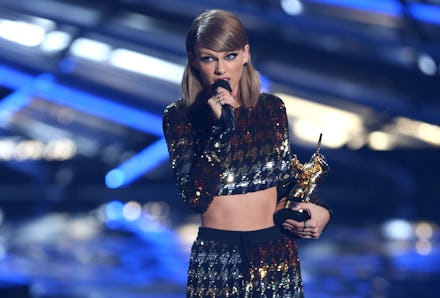The Big Problem With Taylor Swift's New Music Video That Nobody Is Talking About

Taylor Swift had a good night Sunday.
Whether she was mending conflict with Nicki Minaj or accepting the MTV Video Music Award for video of the year, the 25-year-old pop phenom has come a long way since being heckled off the VMAs stage by Kanye West in 2009. But amid all the hubbub, Swift also debuted the music video for her single "Wildest Dreams" — a midcentury fantasy set on the plains of an unspecified African country:
The video's narrative of white people finding romance in the hinterlands of a land wracked by colonial violence is not only obliviously ahistorical, but also exhibits tropes that people across the African diaspora have been trying to dispel for years.
First, the truth: The African continent endured unspeakable brutality under European colonial rule.
Millions of people were enslaved, tortured or killed under violent systems of European law enforcement, forced labor and segregationist policies, fueled by a ravenous export economy that plundered much of the continent's natural resources and left many African nations indebted to — and often financially dependent on — their white former enslavers.
Throughout this era, Western media put forth a specific vision of the colonial relationship, which can be summed up simply: Whites were heroes, saviors or adventurers in a wild and savage land. Blacks were primitive, sub-human, incompetent or — in some cases — completely invisible to the white gaze, and therefore unimportant to white interests.
The image of Africa as a frontier playground is on full display in Swift's video. Not a single black African person is present, let alone one of specified national origin from among the continent's 54 countries.
We see a land rich with wildlife but devoid of humans — a trope that reinforces notions of Africa as feral and exotic.
The video also takes place in the mid-20th century, a time when such "classic" Hollywood efforts as The African Queen, and Out of Africa were either filmed or set — and which romanticize a version of the era that overlooks the anti-black violence and slavery on which the lifestyles depicted were built. These attitudes didn't stop decades ago, as more recent photo shoots for Vogue, Louis Vuitton and even some themed weddings have taken on the look of colonial Africa.
All of this serves to obscure the lives of actual African people, past and present — whether intentionally or by omission.
It's hard to decipher what the creators intended with this video. But considering the dark history in which its African tropes are rooted — not to mention Swift's own recent brushes with racial controversy, and widespread criticism of the public outrage around Cecil the lion's death compared to that over black lives taken by law enforcement in the United States — it seems remarkable that the insidious nature of the African colonial fantasy is so seamlessly glossed over.
This matters. When a pop culture product reaches as many people as a Taylor Swift video does, the images it presents have implications beyond their immediate purview. That's why it's so important to know one's history.